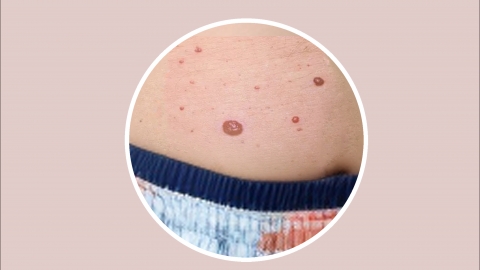What are the differences between blood moles and hemangiomas?
Although both blood moles and hemangiomas present as abnormal skin elevations or color changes, they differ significantly in terms of causes, appearance, growth characteristics, affected populations, and impact. The specific differences are as follows:

1. Causes: Blood moles are usually caused by capillary dilation, proliferation, or abnormal clustering of vascular endothelial cells in the superficial skin layers, often associated with hormonal changes, skin aging, or local irritation. Hemangiomas, on the other hand, are benign tumors resulting from congenital vascular developmental abnormalities or excessive proliferation of vascular endothelial cells, caused by vascular malformations or abnormal vessel growth.
2. Appearance: Blood moles are typically small, with diameters mostly within a few millimeters. They appear bright red or cherry red, usually round or oval in shape, with a smooth surface. They show little or only slight blanching when pressed. Hemangiomas vary greatly in size and may appear red or purplish-red; some have an uneven surface and exhibit noticeable blanching upon pressure, quickly returning to their original color once pressure is released.
3. Growth Pattern: Blood moles grow slowly and generally remain stable in size over time without significant enlargement or spread, showing no invasive behavior. Some hemangiomas grow rapidly during infancy, then gradually stabilize or even regress. A minority may persist and slowly increase in size, with certain types potentially exerting mild pressure on surrounding tissues.
4. Affected Populations: Blood moles are more common in middle-aged and elderly individuals, with incidence possibly increasing with age, and may also occur in people experiencing significant hormonal fluctuations. Hemangiomas predominantly affect infants, often appearing at birth or shortly thereafter, and are relatively rare in adults.
5. Impact on Health: Blood moles generally cause no discomfort and only affect cosmetic appearance, posing no serious health risks. However, hemangiomas located in critical areas may cause mild discomfort due to compression of nearby tissues. Larger lesions can impact appearance, and very rarely, certain types may carry a risk of bleeding.
In daily life, it's important to monitor any unusual skin changes, avoid frequent friction or irritation to the affected area, and maintain clean, dry skin to help minimize potential complications.




